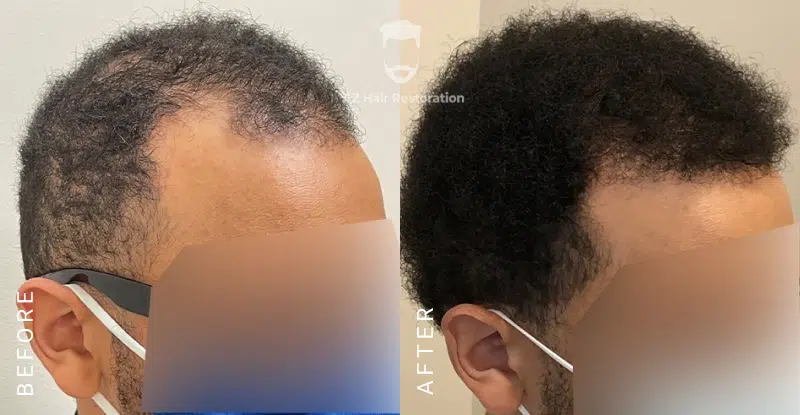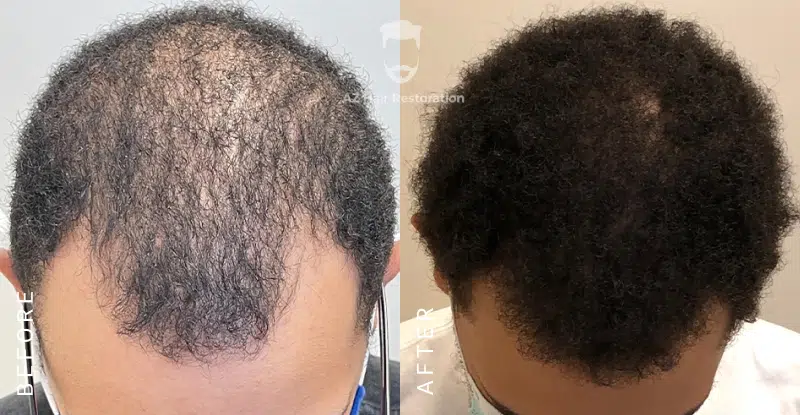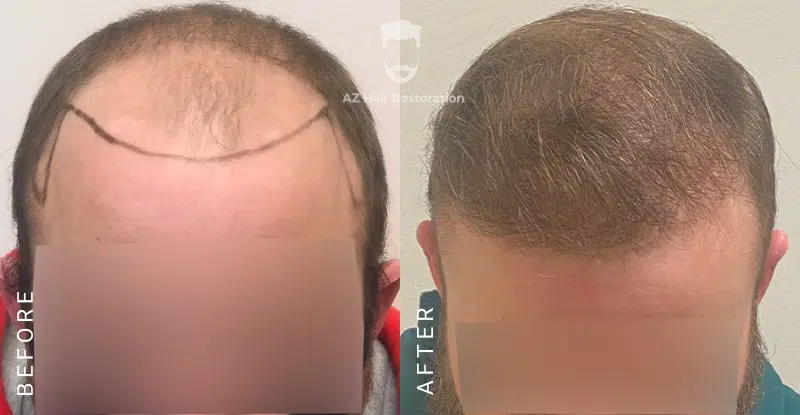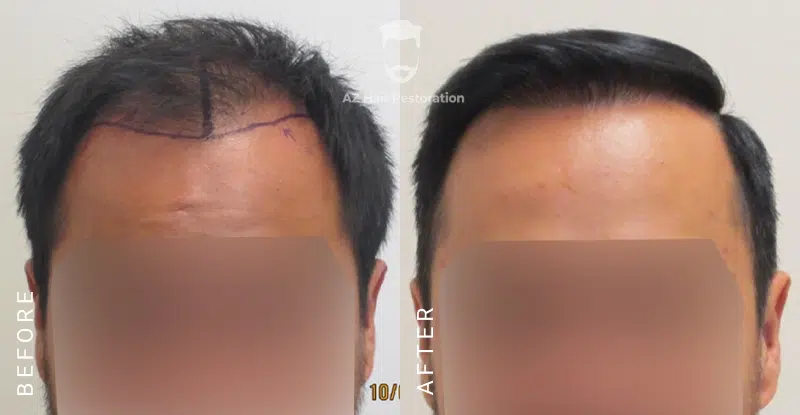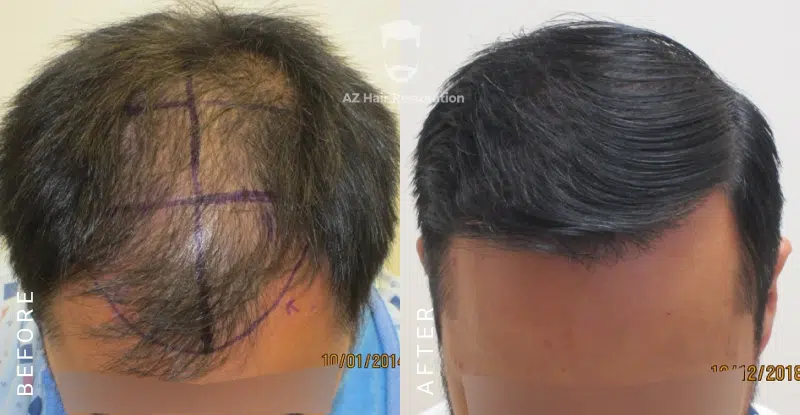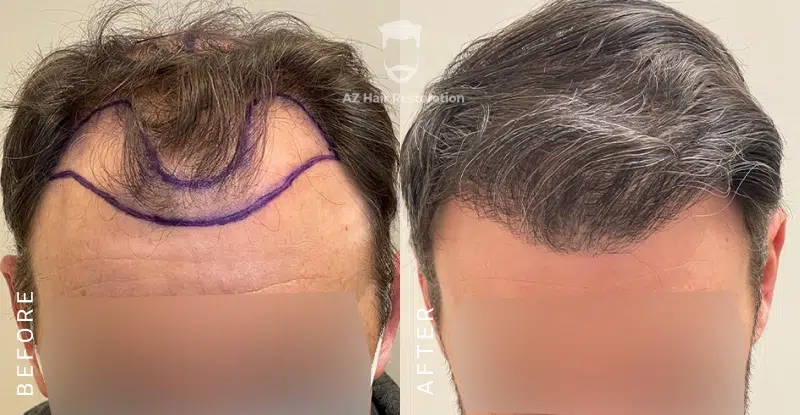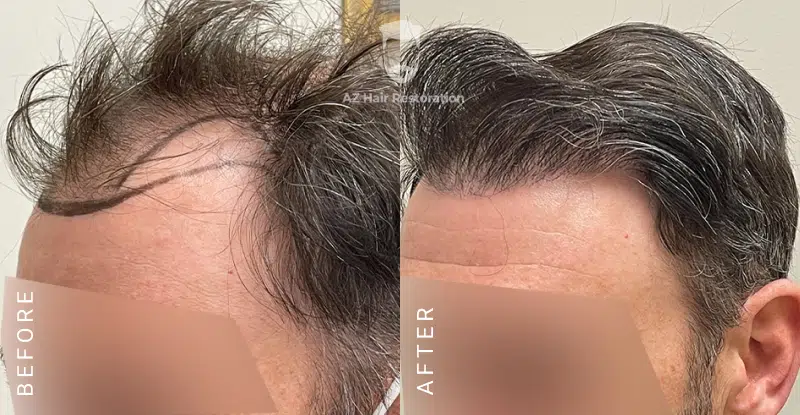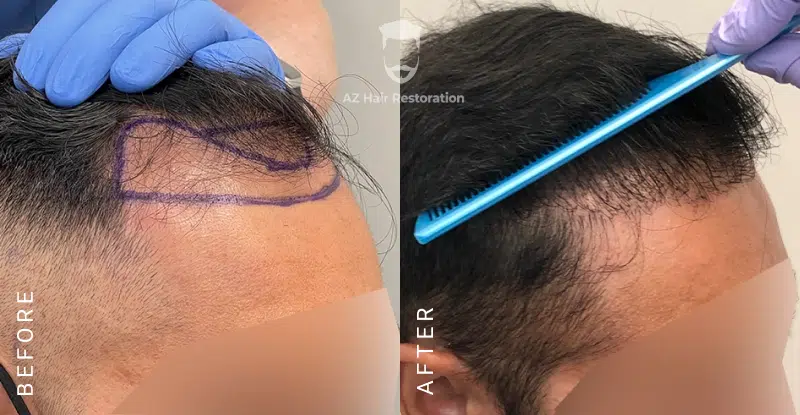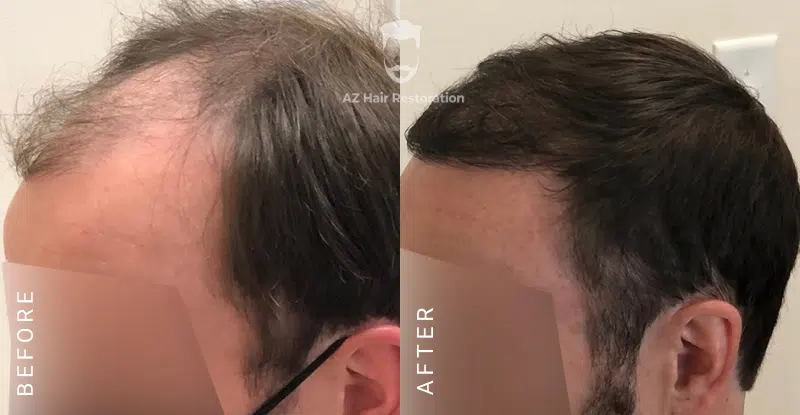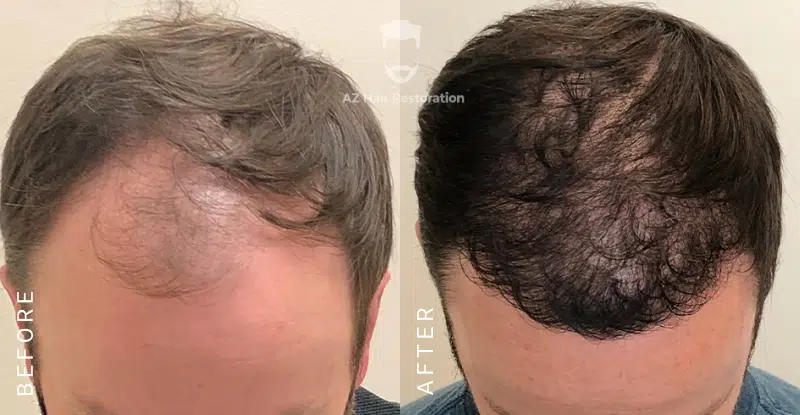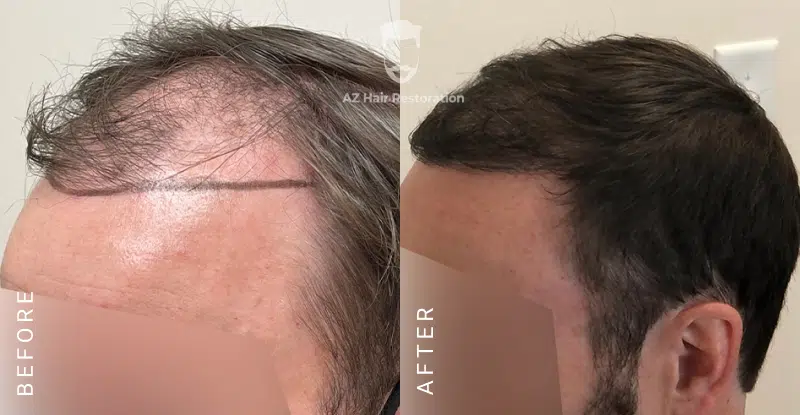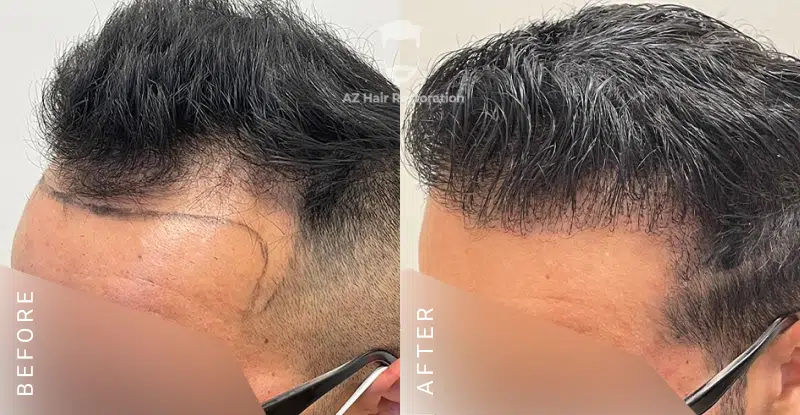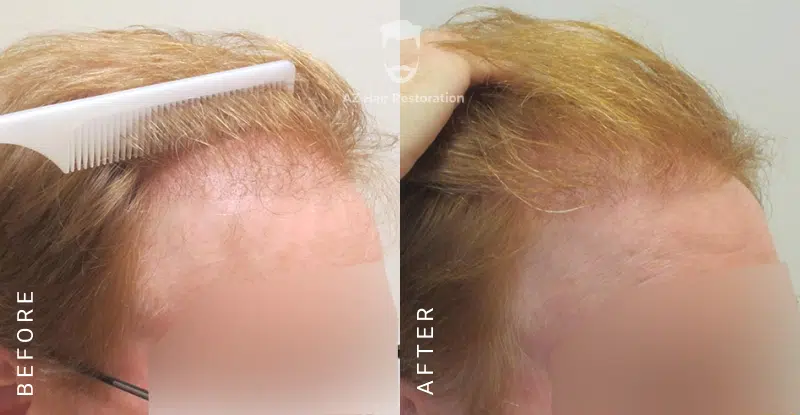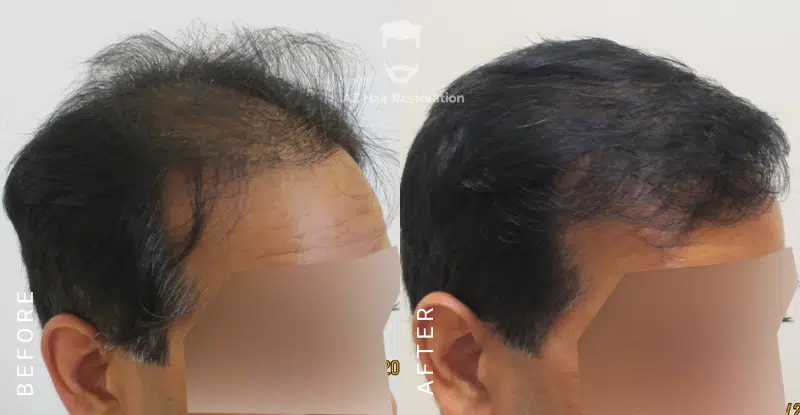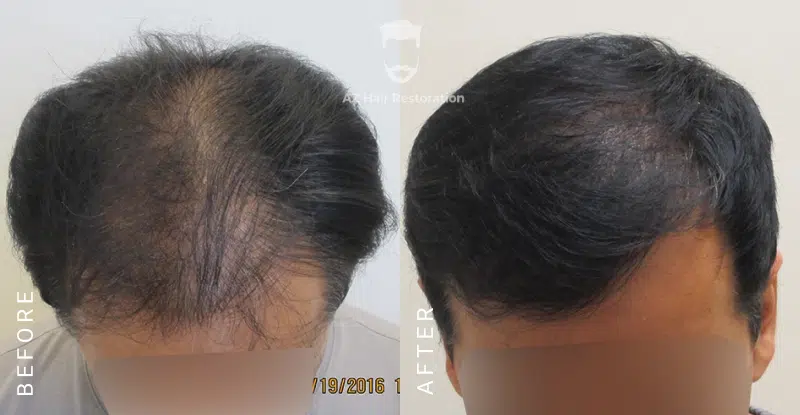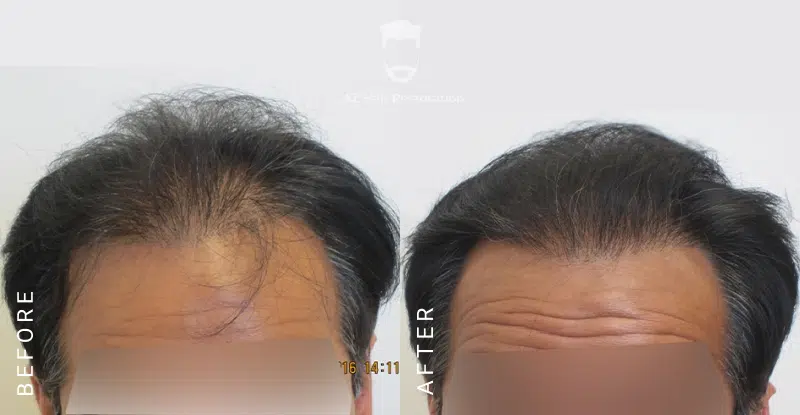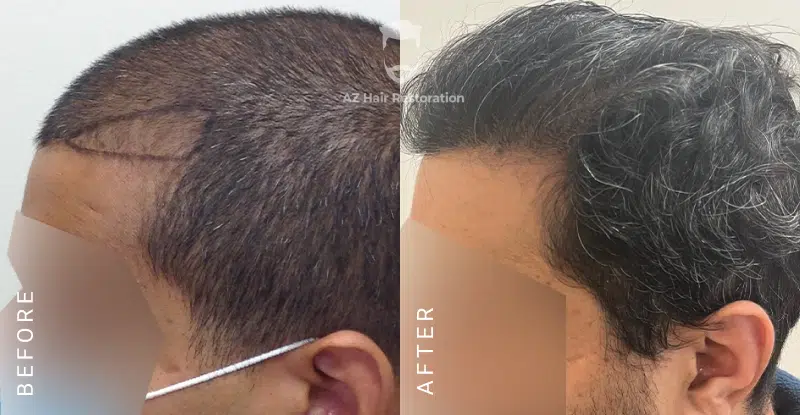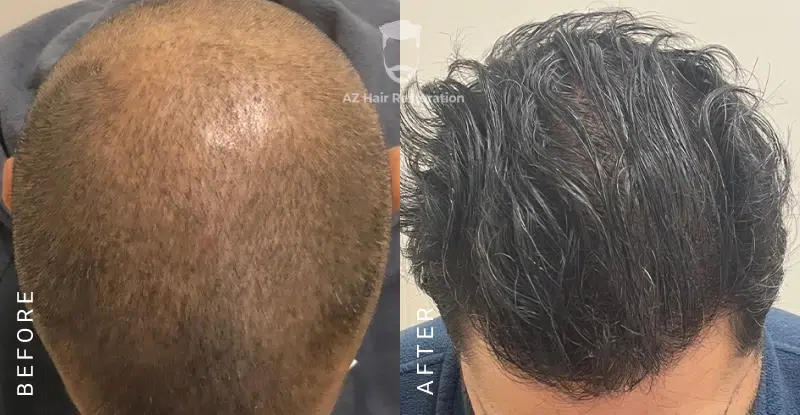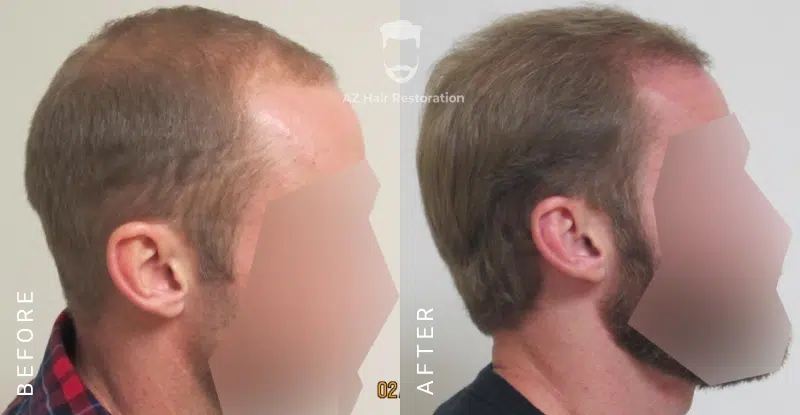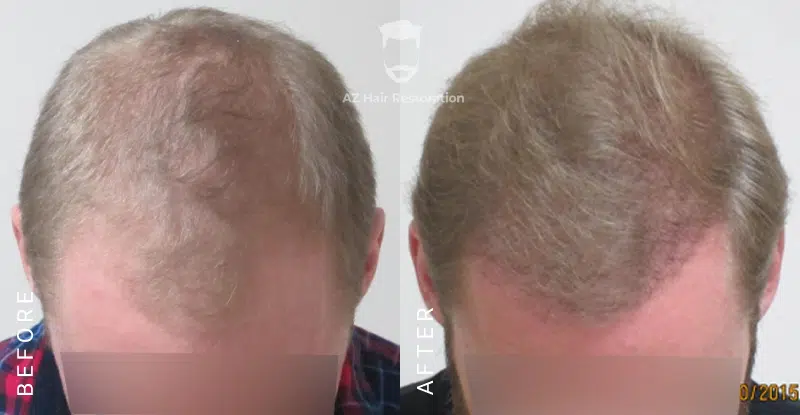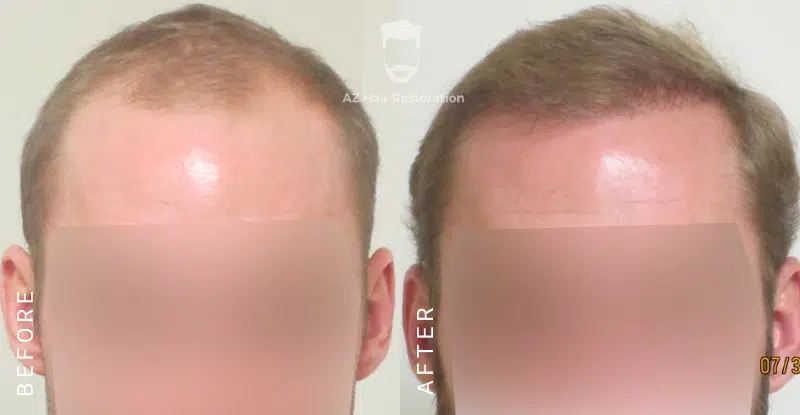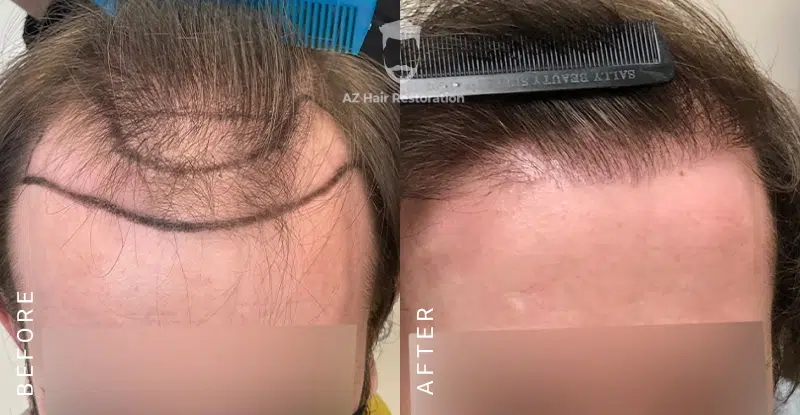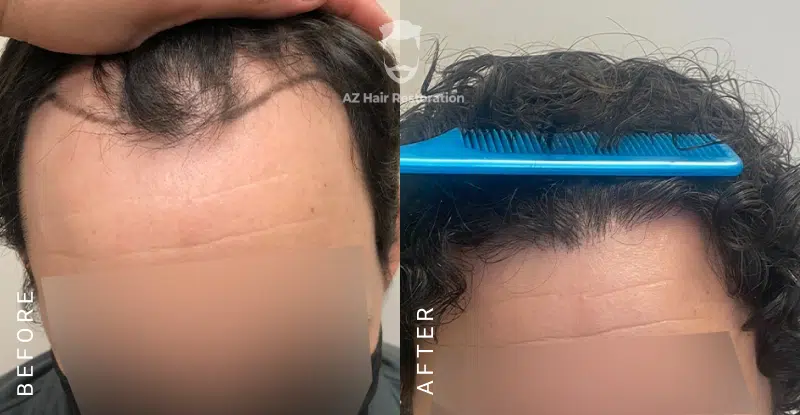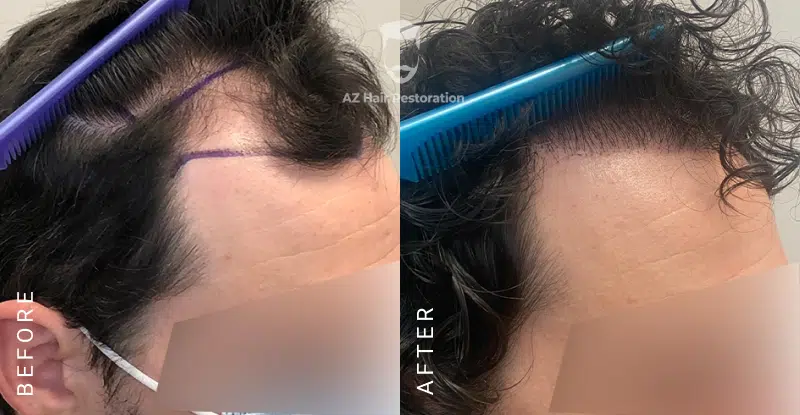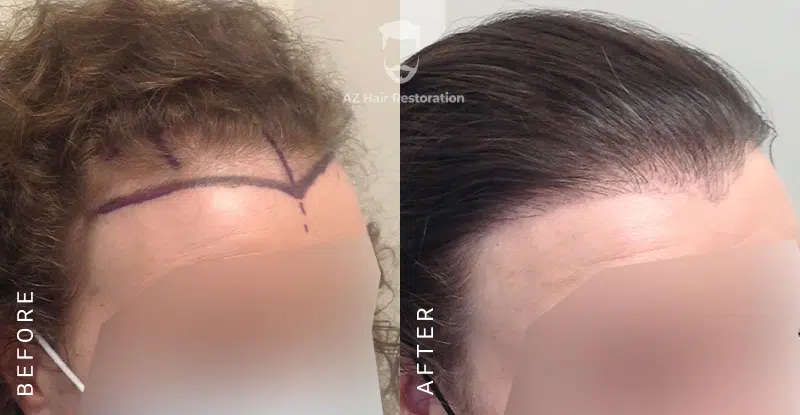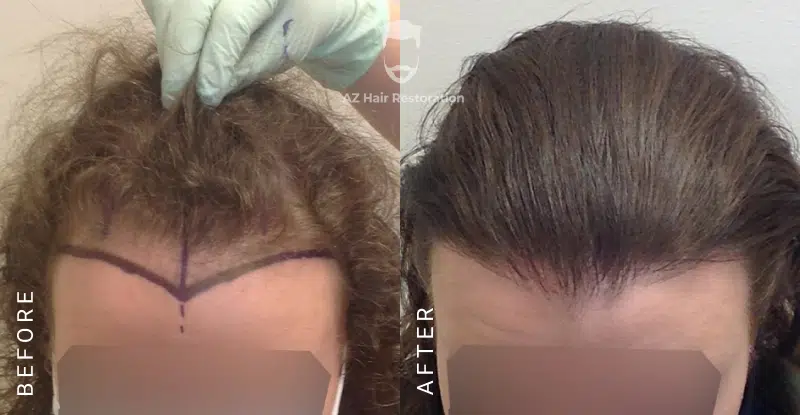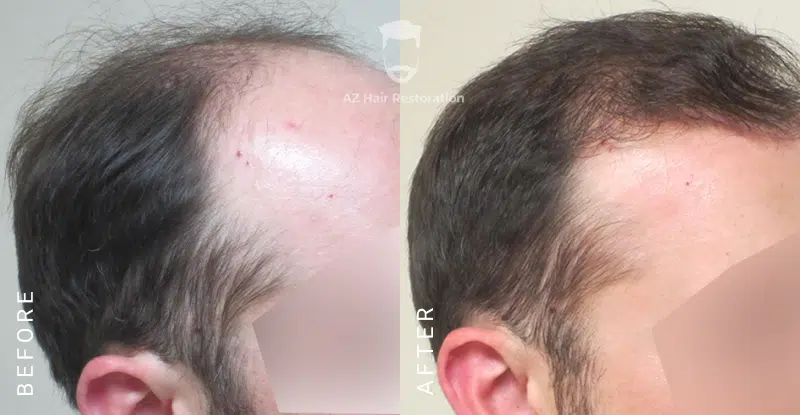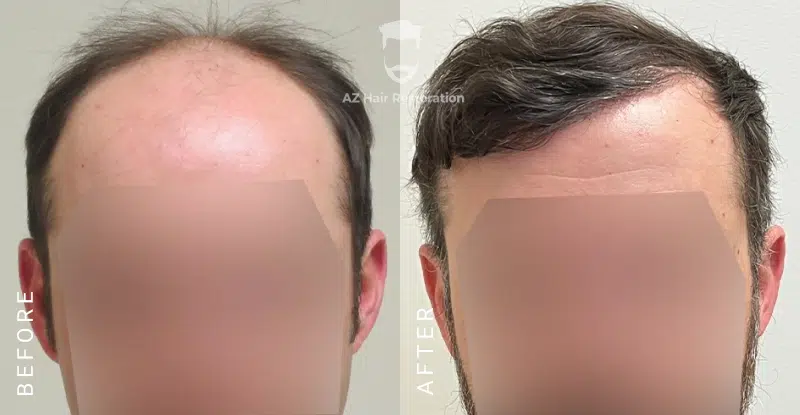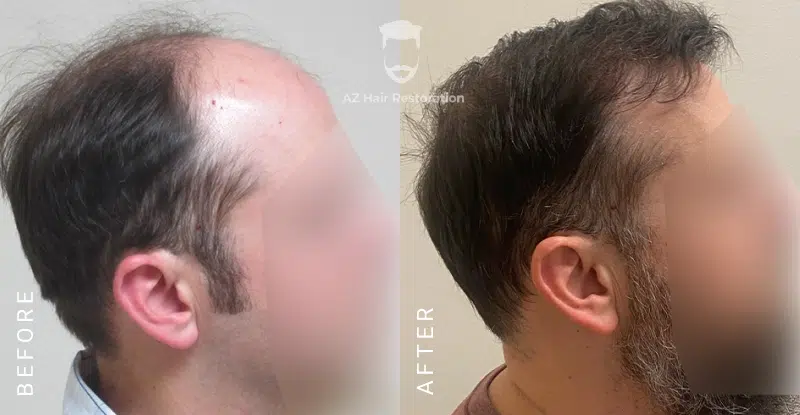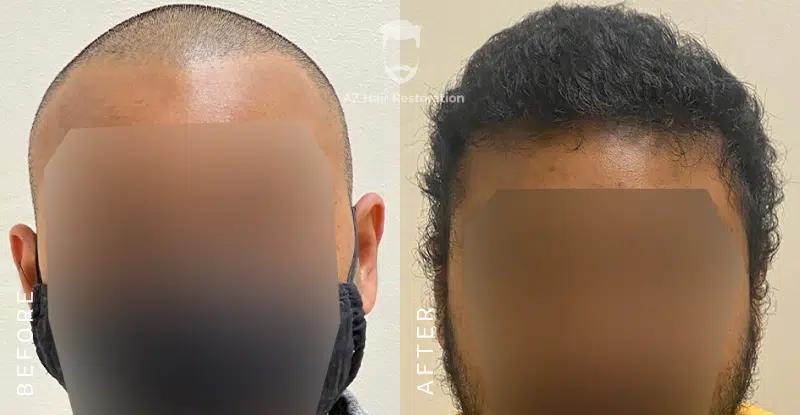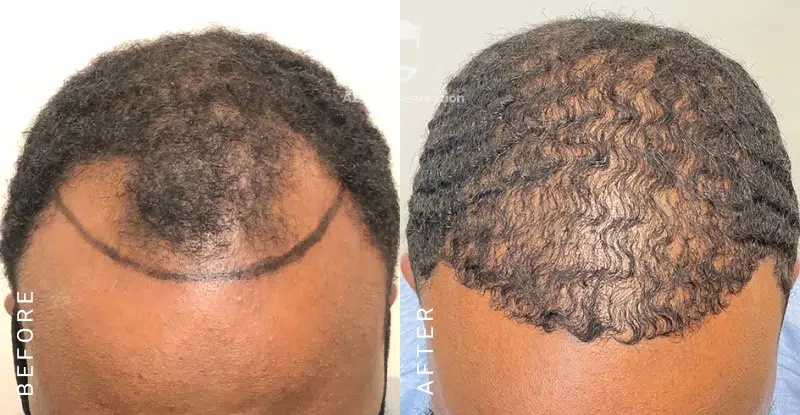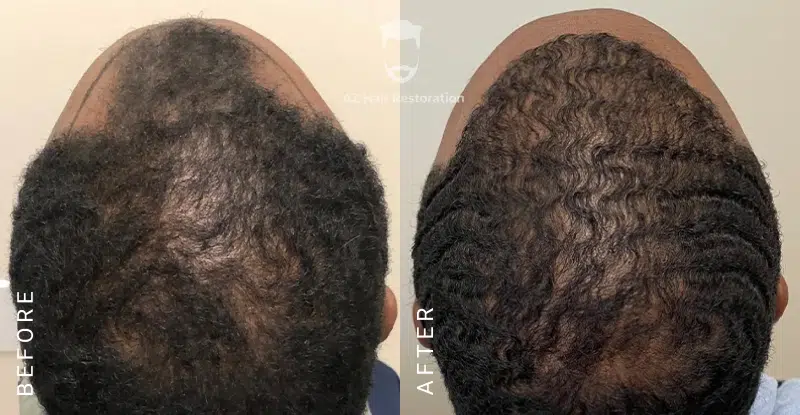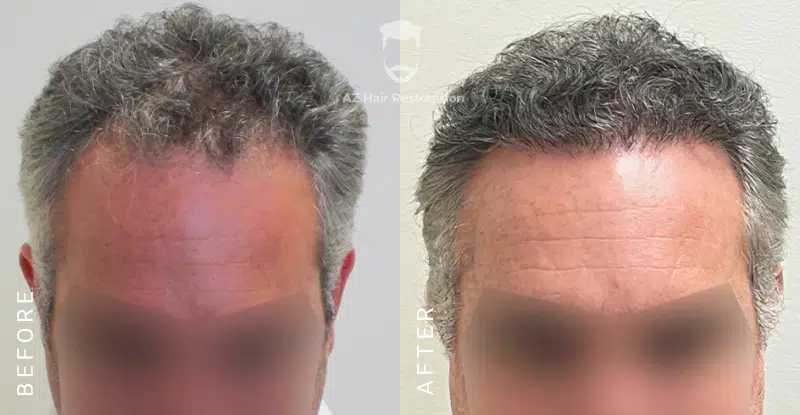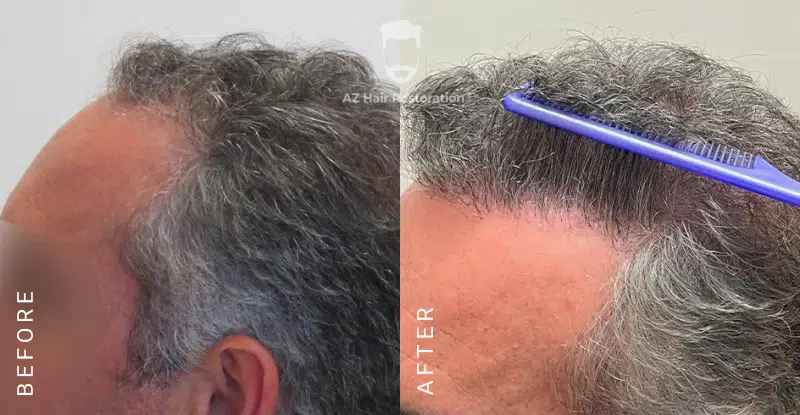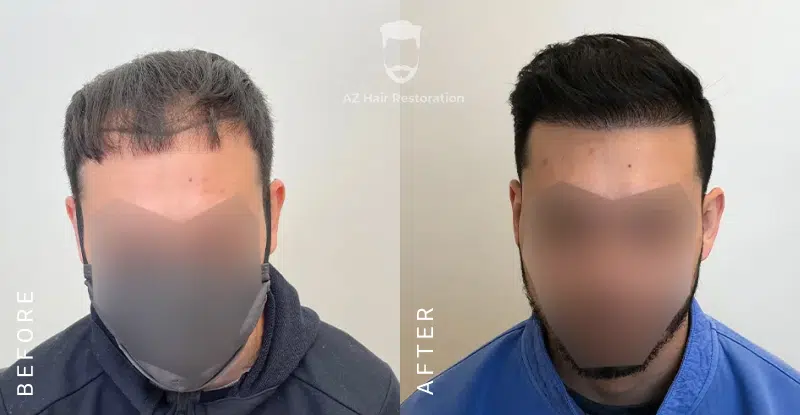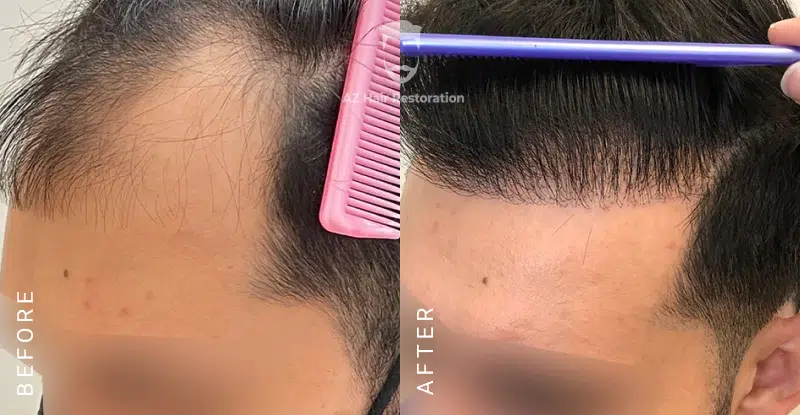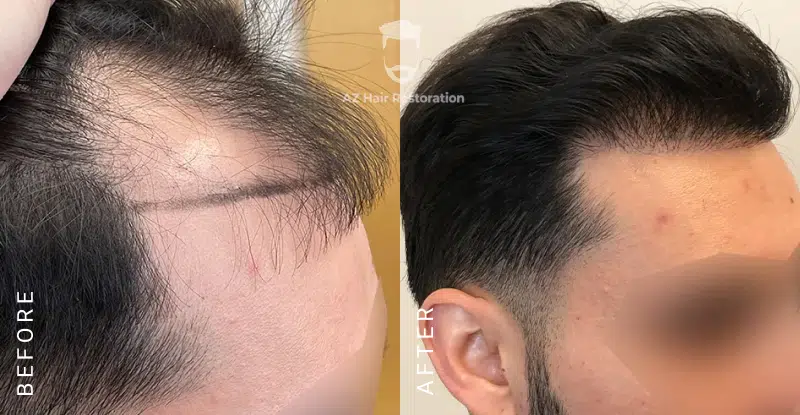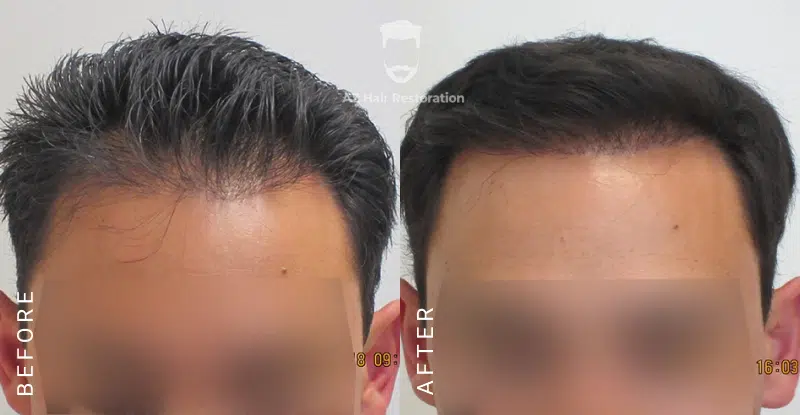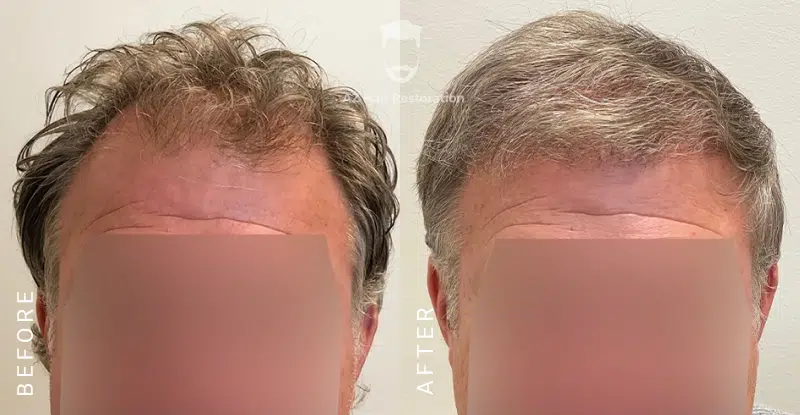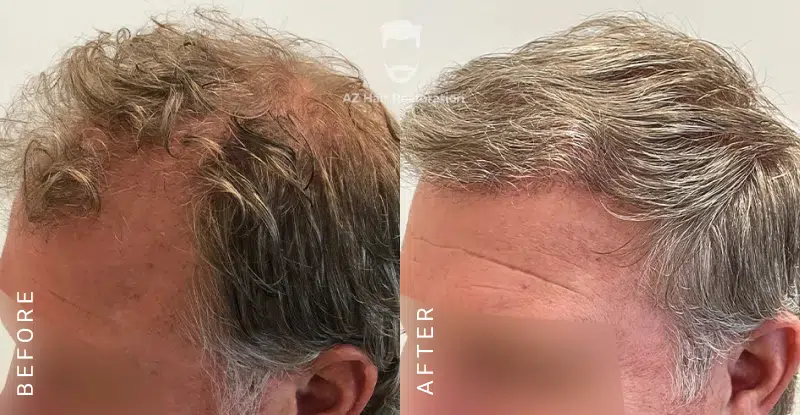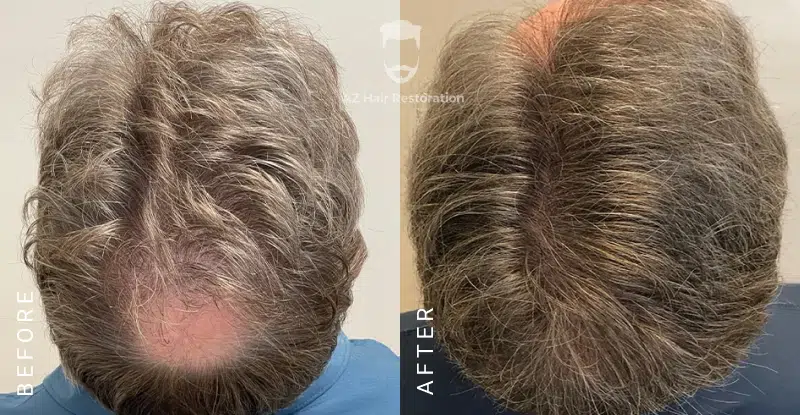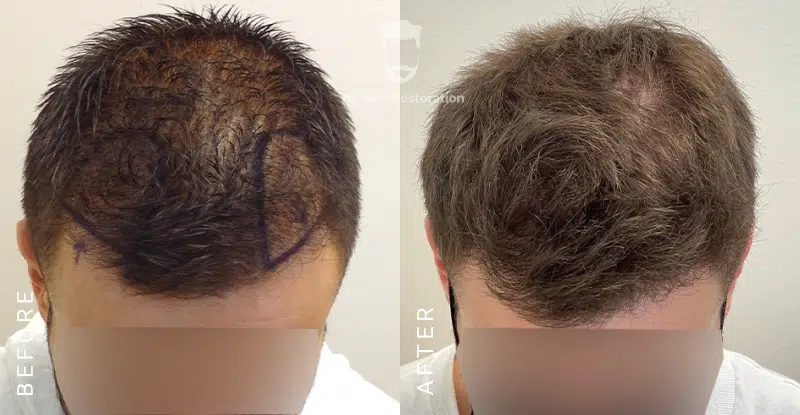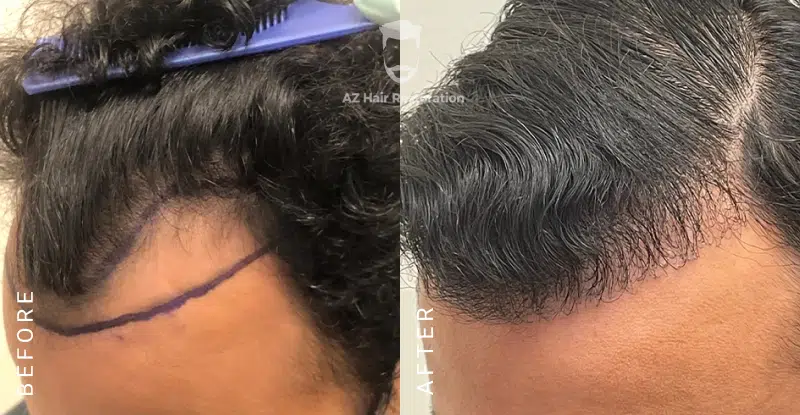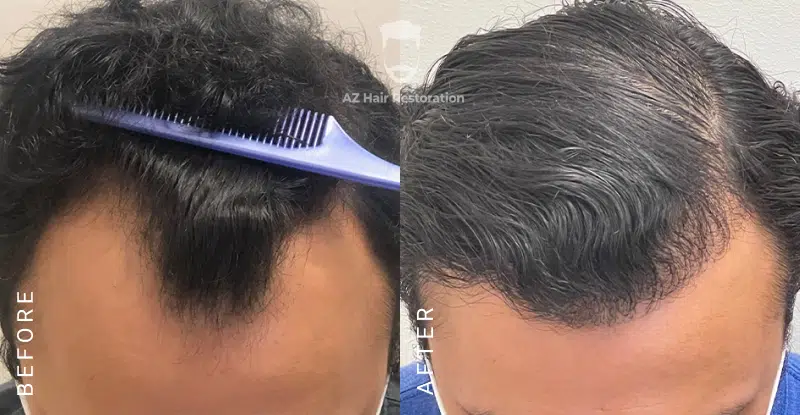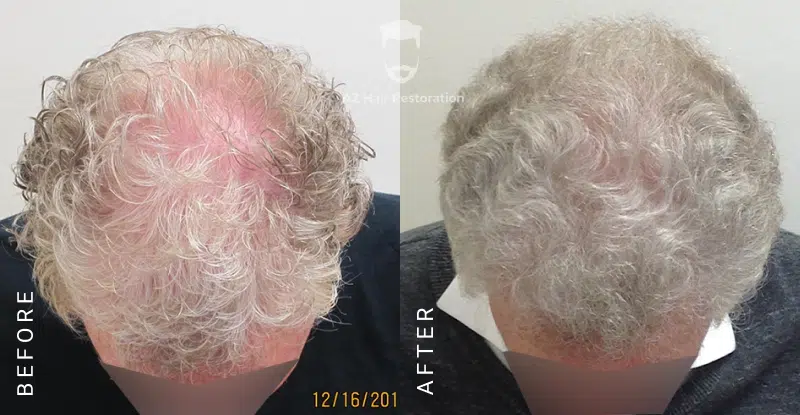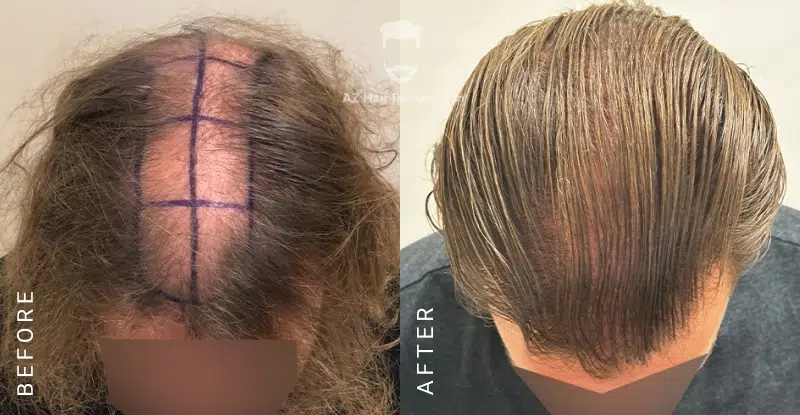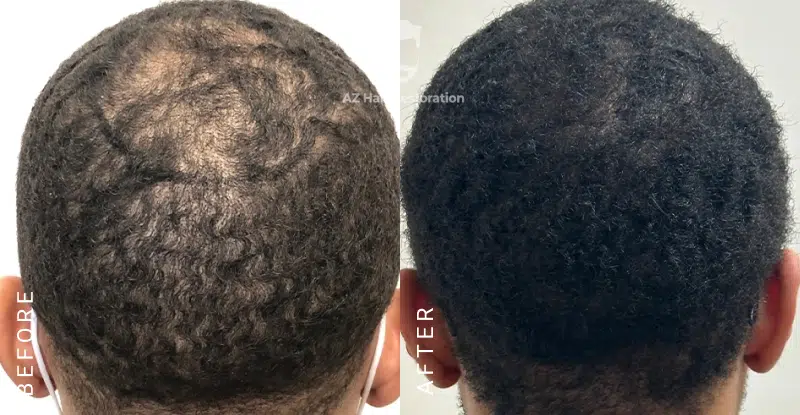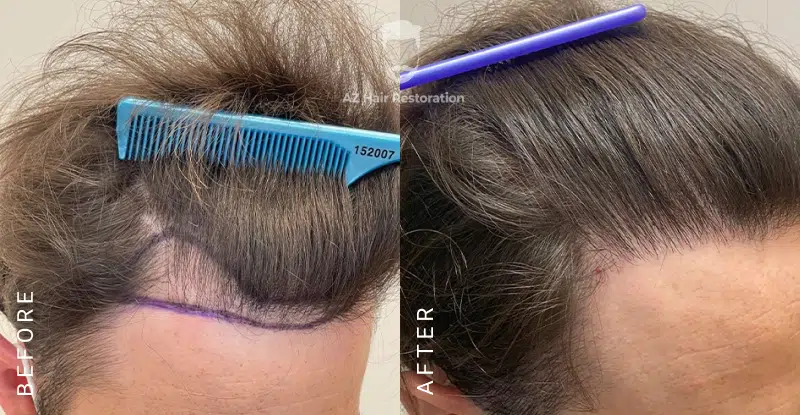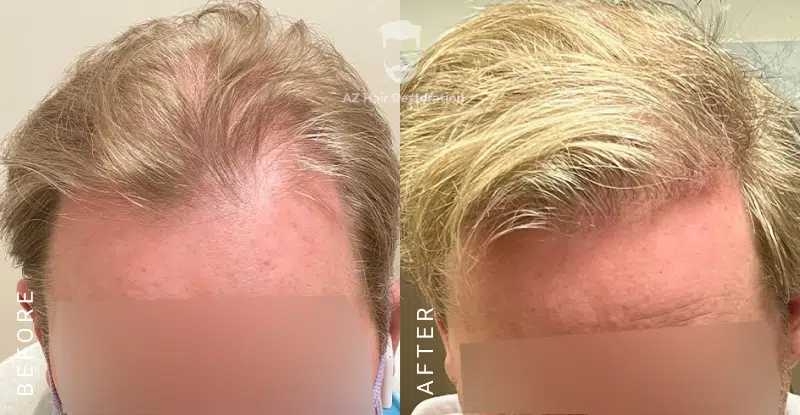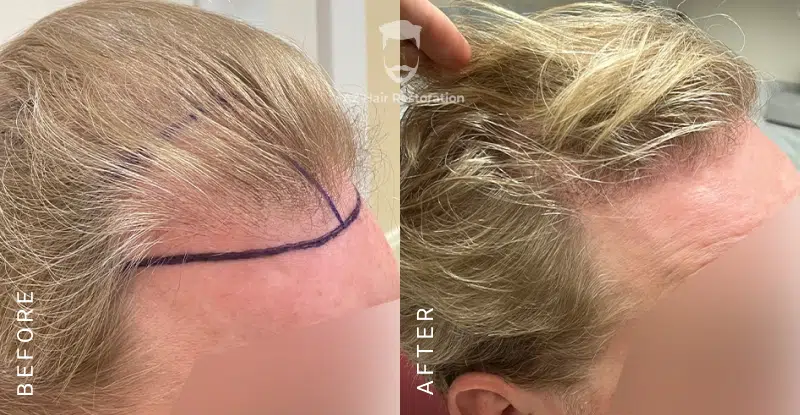Also, i went there 4 times for PRP as of now and the pain was very little.
1. Accept that you may never regain all of the original hair you once had. But you can be confident that a transplant will satisfactorily enhance what you naturally have.
2. Achieving desired results may require additional transplants after the initial procedure. If you don't have the patience or the means consider other options.
3. Trusting the advice of the Doctor, over someone without experience in transplants, is highly recommended for a successful outcome.
Restore your natural fuller hair
Whether discussing the Strip Method or FUE (Follicular Unit Extraction) method of hair transplantation, the key difference lies in the technique used to harvest hair from the donor area—not in how the grafts are placed in the recipient area, such as the hairline, upper scalp, eyebrows, or beard. Both m0thods aim to achieve the same result, but the critical distinction is in how the grafts are harvested.

A Guide to choosing the right hair transplant procedure for you
All photos are unedited and actual patients of AZHR. The outcomes shown are only relevant for these patients and do not necessarily reflect the results other patients may experience. Our team will discuss any factors that could influence the results that you may get.
Take the first step today towards regaining your confidence and living life to the fullest.
Strip Hair Transplant Procedures
The Strip Hair Transplant Method can be used interchangeably with the term Follicular Unit Transplantation (FUT). AZ Hair Restoration provides both FUT and FUE (Follicular Unit Extraction) techniques. FUT and FUE have individual strengths and weaknesses that are very important to become familiar with BEFORE proceeding with hair transplantation. FUT involves harvesting hair and underlying tissue from a donor site, usually located on the back or sides of the scalp, creating FU grafts and then transplanting them to areas where hair loss has occurred.
Hair Transplantation Techniques – Compare FUE vs Strip Method
Dr. Arthur Zacco has refined the traditional FUT method by also creating Linear Multiple Follicular Unit (MFU) grafts to produce improved hair density behind the hairline. If the hair transplant involves the hairline, beard, mustache, or eyebrows, standard Follicular Unit (FU) grafts are used to produce a feathered natural appearance. The FUT method has much less transection of follicles compared to FUE: about 1/10 the transaction rate as the FUE technique. This makes the strip method more efficient and effective for hair transplantation that requires the most follicles.
Examples where FUT would be more effective are: thinning in the crown/back, which usually continues to enlarge as men age, and hair thinning simultaneously in the front and back, which usually requires multiple hair transplants. In these examples, the FUE would run out of donor area BEFORE the hair restoration goal is achieved. If the hair in the crown/back continues to thin after hair transplantation, one is left with a tuft of hair in the crown surrounded by a balding area, which appears unusual. The FUT can ultimately move about 3-4 times more follicles than the FUE tech.
The Strip method is much more efficient than the FUE method. Only the FUT or Strip method should be utilized when large areas or the crown is transplanted. The Crown should not be transplanted using the FUE method as this will result in running out of donor hair, referred to as Over-Harvesting. The FUT technique is much better than the FUE technique at moving a lot of hair and/or transplanting the crown. It is rare to run out of donor area or produce over-harvesting when using the FUT technique. Over-harvesting and the running out of donor tissue are much more common with the FUE technique.
MFU grafts that are good at producing density can only be obtained using the Strip technique. It is important to note that using the Strip/ FUT method or the FUE method, the scar will not be seen if the hair is worn long enough. This would be clippers set at 2 or 3 for Strip / FUT and 1 or 2 with FUE.

The Process of Strip Hair Transplant
The strip method begins with surgically removing a thin strip of hair and its tiny supportive structures (sebaceous glands, sudoriferous glands, and follicles) from the donor area. This strip usually measures between 1 and 1.5 centimeters in width and can vary in length depending on the laxity of the skin and the number of grafts needed.
The donor area is then sutured closed, and the scalp strip is then slivered and cut into individual follicular units and multiple follicular unit grafts using binocular/stereo microscopes. Each follicular unit (FU) typically contains one to four hair follicles; each multiple follicular unit (MFU) graft contains 2 to 4 follicular units.
Dr. Zacco’s technique of using linear MFU grafts involves cutting grafts the same width as a standard FU graft but with two to three times the length. Gone are the days of large round plugs with this more innovative approach, which more efficiently utilizes donor tissue. By grouping multiple follicular units closely together, Dr. Zacco maximizes hair density while maintaining your hair’s natural growth pattern.
This method allows for the transplantation of more hair follicles in a single session, making it ideal for patients with extensive balding or who desire more hair density. By carefully placing FU grafts in the hairline for a natural, feathered appearance and positioning MFU grafts behind the hairline to increase hair density, Dr. Zacco ensures a natural-looking hairline with enhanced density in the areas behind it. This achieves an optimal appearance throughout the recipient area.
Scarring and Concealment
One of the common concerns of laypeople with the strip method is the linear scar left in the donor area. Both FUE and Strip Hair Transplantation (HT) produce scars. The FUE method produces more scar tissue than Strip or FUT HTs, but shorter hair can hide the scarring. However, since the FUE method produces more scar tissue, it is usually limited to only one large HT or two medium hair transplants.
The Strip HT method can have up to 5 hair transplants before the scar becomes problematic. The previous scar can be removed with every hair transplant if done by an expert hair restoration physician. With the FUE scar, it is there for life and can never be removed. The scar tissue is additive with every FUE procedure, making it problematic after the 2nd FUE HT. That is why the FUE HT should be avoided when there is even minimal hair loss currently or anticipated in both the front and the crown (large surface area).
However, Dr. Zacco’s expertise ensures this scar is minimal and strategically placed so the surrounding hair can easily conceal it. Strip and FUT scarring can be hidden for most patients, with hair worn at a #3 or #4 clipper guard setting length. FUE scars can usually be hidden for most patients, with hair worn at a #2 clipper guard setting length. Additionally, the sutures or staples used to close the incision of the strip can also be concealed for most patients immediately after the procedure. The sutures or staples are typically removed eight days after the procedure.
FUE does not require sutures or staples, making it a suitable option for individuals with minimal hair loss both now and in the future, particularly those who prefer to wear their hair very short. However, for most patients, the Strip Hair Transplant (FUT) tends to be the better choice. Notably, the scars from both methods CAN BE EFFECTIVELY CONCEALED!
Ideal Candidates for the Strip Hair Transplants
The Strip method is particularly beneficial for individuals with significant hair loss currently and those who anticipate future hair loss. This is why the FUT/strip method is the procedure of choice for those 20-40 years old, because future hair loss is difficult, if not impossible, to predict.
Significantly more hair follicles can be moved with the FUT/Strip procedure than with the FUE procedure. This is true per hair transplantation, and the total follicles moved during one’s lifetime. The Strip method (FUT) can transfer about 2.5 to 3 times more follicular units per hair transplantation than the FUE procedure.
Furthermore, about 2.5 to 3 times more follicular units can be moved throughout one’s lifetime using the Strip method compared to the FUE method. Those who don’t wish to wear their hair very short, clipper guards set #0-#2, are also ideal candidates for the Strip method (FUT).
It is also a preferred choice for those who are not suitable candidates for Follicular Unit Extraction (FUE) due to insufficient donor hair or other medical conditions. Patients willing to have a linear scar and can tolerate a slightly extended recovery period also find this method the most advantageous compared to any other hair restoration method.
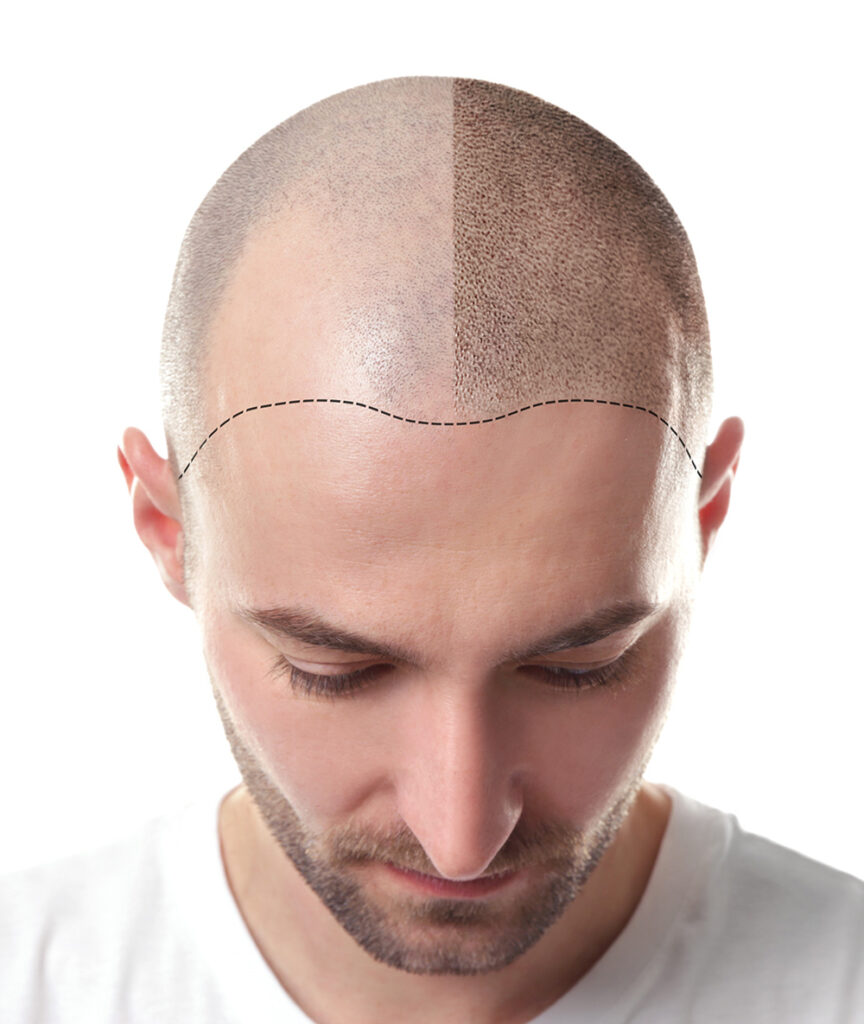
Advantages of Linear MFU Grafts
By utilizing Linear Multiple Follicular Unit (MFU) grafts, Dr. Arthur Zacco can transplant a higher volume of hair, providing more density in each session. By doing this, Dr. Zacco reduces the number of sessions needed to achieve full coverage and enhances the density and natural appearance of the transplanted hair.
The ability to move more hair per session enables patients to achieve their desired results more quickly and with fewer surgical interventions. Follicular Unit grafts produce a light feathered appearance, while Linear MFU grafts provide an appearance of greater hair density.

Consultation and Personalized Treatment Plans
By utilizing Linear Multiple Follicular Unit (MFU) grafts, Dr. Arthur Zacco can transplant a higher volume of hair, providing more density in each session. By doing this, Dr. Zacco reduces the number of sessions needed to achieve full coverage and enhances the density and natural appearance of the transplanted hair.
The ability to move more hair per session enables patients to achieve their desired results more quickly and with fewer surgical interventions. Follicular Unit grafts produce a light feathered appearance, while Linear MFU grafts provide an appearance of greater hair density.
Aftercare and Recovery
Proper post-surgery care is crucial for the success of the strip hair transplant. Dr. Arthur Zacco will provide detailed aftercare instructions to help you manage the recovery process. Instructions include:
- Guidelines on how to care for the donor and recipient areas.
- Medications to manage pain and prevent infection.
- Tips for promoting optimal healing and hair growth.
- Most patients can return to normal activities within 2-3 days, although strenuous activities should be avoided for one to two weeks to allow proper healing.
Long-term
Results
The results of the strip hair transplant typically last a lifetime. Once the transplanted hair starts to grow, it will continue to grow naturally for a lifetime. Patients can expect new hair growth usually within three months post-surgery, with full results appearing after about a year. The transplanted hair will integrate seamlessly with the existing hair, providing a natural and youthful appearance.
FUE vs Strip Hair Transplant Method
Both the Strip Hair Transplant Method (FUT) and Follicular Unit Extraction (FUE) are effective techniques for hair restoration, but they differ in several key aspects:
Harvesting Technique:
- Strip Method (FUT): This method involves removing a strip of tissue from the donor area, which is then dissected under a microscope into follicular and multiple follicular unit grafts. It allows for the harvesting of a large number of grafts in a single session. This technique better preserves the donor tissue and allows for about 2-3 times more transplantable follicles than the FUE technique. This is important when there is a large area of hair transplantation or future hair loss is anticipated, which has to be considered in people in their 20s and 30s.
- FUE: Involves extracting individual follicular units directly from the donor region employing a specialized punch tool. Unfortunately, with the FUE harvesting technique, MFU grafts are not obtainable.
Scarring:
- Strip Method (FUT): This method leaves a linear scar that can be concealed by surrounding hair. A haircut set at a #3 clipper guard length can hide a linear scar. The old scar can be removed during consecutive procedures. Thus, the patient is left with only one linear scar, even after undergoing a second and third strip hair transplantation.
- FUE: Produces hundreds to thousands of round 0.8mm-0.9mm diameter scars that can be hidden by a haircut with clippers set at #1 or #2. Unlike the strip method, the FUE scars can not be removed with repeated hair transplants. Thus, the number of scars is compounded in every procedure, limiting the number of hair transplants the donor area can tolerate before appearing too thin (overharvesting).
Recovery Time:
- Strip Method (FUT): This method typically involves a slightly longer recovery period due to the linear incision. Sutures or staples are removed after about 10 days.
- FUE: The donor typically offers a slightly quicker recovery time and does not require sutures or staples. The recipient area recovery time is equal to that of the strip method.
Ideal Candidates:
- Strip Method (FUT): This method is best suited for patients with significant hair loss who need a large number of grafts. It’s also preferred for those with insufficient donor hair for FUE.
- FUE is ideal for patients who require fewer grafts and have adequate donor area density. It is also suitable for those who wish to avoid a linear scar.
Procedure Duration:
- Strip Method (FUT): Can transplant a large number of grafts in a single session, making it efficient for extensive hair restoration.
- FUE: Multiple sessions may be required to achieve the same number of grafts as a single FUT session, especially for large areas of hair loss. However, FUE does have a risk of donor depletion after too many sessions.
| FUE (FU Grafts) | FUT (FU Grafts) | STRIP (FU & MFU Grafts) |
|---|---|---|
| The least best method to produce transplanted hair density | A good method for producing transplanted hair density | MFU (Multiple Follicular Unit) grafts are the best method to produce transplanted hair density. |
| The scarring is less noticeable once healed. The hair can be worn shorter, usually with a #1-2 clipper guard length. There is no linear scar. However, a FUE produces hundreds to thousands of small (0.9mm) round scars, depending on the size of the procedure. | A FUT will result in a narrow, linear scar. The scar will not be seen if the hair is worn at a #3 clipper guard length or longer. | Same as FUT |
| No suture is required | Sutures or staples are required for the donor area only | Same as FUT |
| It is optimal if a relatively small to medium recipient area needs to be transplanted. | It is optimal if a large area or a large number of grafts are required. Best for donor tissue preservation. | Same as FUT. MFU grafts behind the hairline are optimal if high density is desired. |
| This is one of the latest additions to the field of hair transplantation since the early 2000’s | This is a tried and proven technique in hair transplantation since the 1990’s | Same as FUT |
| Patients with very curly hair are usually not a good candidate for FUE | Can accommodate any hair type. | Same as FUT |
| More transected follicles than the FUT and Strip Methods. This results in less hair growth density. | Less transected follicles compared to the FUE method. | Least transected follicles of all methods. This results in the best preservation of the donor area and more hair growth density in the recipient area. |
| Overall, FUE is the most expensive. | Less Expensive than FUE. | Same as FUT |
Why Choose AZ Hair Restoration?
When it comes to hair restoration in Raleigh, NC, experience matters. AZ Hair Restoration stands out for several reasons:
Led by Dr. Arthur Zacco
With decades of experience in hair restoration, Dr. Arthur Zacco is committed to delivering the best results – take a look at our before and after photos.
Personalized consultations
Dr. Arthur Zacco will assess your hair loss and recommend the best hair growth treatment plan for you.
State-of-the-art techniques
Our clinic offers the latest in FUE, FUT, and Growth Factor Therapy.
Transparent pricing
Flexible payment plans
We make hair restoration accessible with financing options that fit your budget.
Comprehensive care
From consultation to post-procedure follow-up, we provide support every step of the way.

Meet
Dr. Arthur Zacco
Dr. Arthur Zacco has been performing hair transplantation in Wake County, North Carolina, since 1996. With decades of experience in the field, Dr. Zacco has helped countless patients restore their hair and confidence.
Dr. Zacco is highly skilled in a full range of hair restoration methods, including FUE, FUT, MFU, PRP therapy, and corrective procedures for transplants performed elsewhere. As the only physician-owned hair transplantation facility in Wake County, AZ Hair Restoration is committed to providing high-quality, individualized care at a reasonable cost, avoiding the inflated expenses of large corporate practices.
Dr. Zacco believes that education is paramount in the hair restoration process. He emphasizes the importance of understanding different techniques and how they align with each patient’s unique needs. In cases of significant hair loss, Dr. Zacco may recommend combining techniques to achieve the best results.


Get Your Hair—and Your Confidence—Growing

Your journey to hair restoration starts with a simple step: reaching out to us. Let AZ Hair Restoration in Raleigh, NC, help you reclaim the hair you miss with personalized hair growth treatments and hair transplants designed for real results.
Contact us today to book a FREE consultation with Dr Arthur Zacco and take control of your hair loss with expert care and proven solutions.
Book a Free
Consultation With
Dr. Arthur Zacco
Ready to start your new chapter?
Fill out the form and one of our specialists will be in touch soon.
Prefer a phone call? Perfect, give us a call on 919-830-3778














